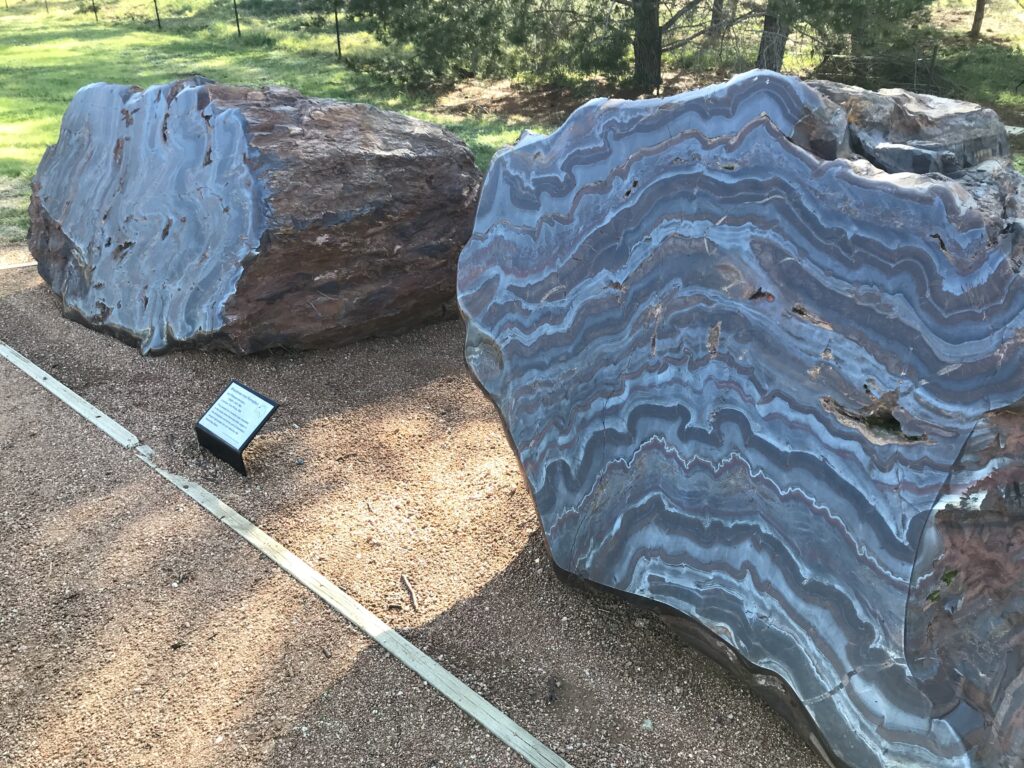
Brockman Iron Formation is a banded iron formation (BIF), a type of sedimentary rock consisting of alternating layers of iron oxides and iron-poor chert. Banded iron formation (BIF) was deposited from dissolved ferrous iron in the circulating waters of an early global ocean under a reducing atmosphere. During this time, the oceans were more iron-rich and were inhabited by photosynthetic bacteria that caused the precipitation and settling of layers of iron oxide amongst other sediments. The alternating bands were created as the marine environment see-sawed between oxygen-rich (dissolved iron precipitates) and oxygen-poor (silica precipitates), as microbial activity varied.
Banded iron formations are one of the most important precursors to the formation of economic sources of iron ore. During the Paleoproterozoic Era, around 2 billion years ago, silica and carbonate were removed from the banded iron formations leaving behind enriched iron ore (Laurie, 2013). Many globally significant iron ore deposits are found in the Pilbara, Western Australia, making BIF one of Australia’s most important rocks. Pilbara BIFs are the best exposed, least metamorphosed and least deformed BIFs on Earth and contain the world’s largest concentration of iron, amounting to billions of tonnes of minable ore (O’Brien, 2009).

The National Rock Garden (NRG) will display several pieces of BIF. Two pieces are already on display as part of the NRG’s Federation Rocks display. Donated by Fortescue Metals Group and the Government of Western Australia, these two pieces are from the Hamersley Range in the Pilbara Region of Western Australia.
The NRG will also display two pieces of BIF (pictured) that have been loaned to the NRG by Mr Wolfgang Kraker von Schwarzenfeld as part of his Global Stone Project. These two BIF rocks were originally one piece that was sourced from Hamersley Iron’s Mt. Tom Price mine in the Pilbara and came from the 2.5 billion-year-old Joffre Member of the Brockman Iron Formation. You can read more about the Global Stone Project in NRG Newsletter 11 and at the Global Stone Project website.
References
Laurie, J. (Editor), et al. 2013. Geological TimeWalk. Geoscience Australia, Canberra
O’Brien, R., 2009. Australia’s iron ore product quality. Geoscience Australia, Canberra.
Authors
Mike Smith and Michelle Cooper, Directors, National Rock Garden





